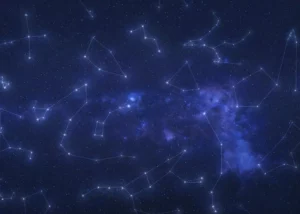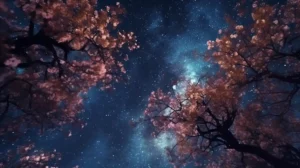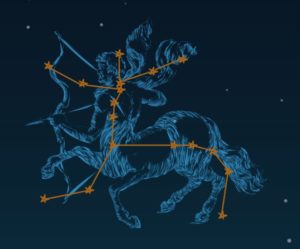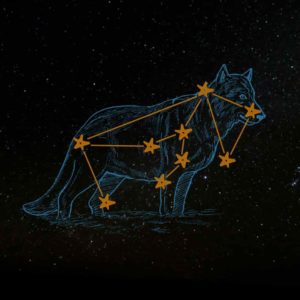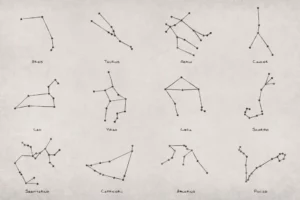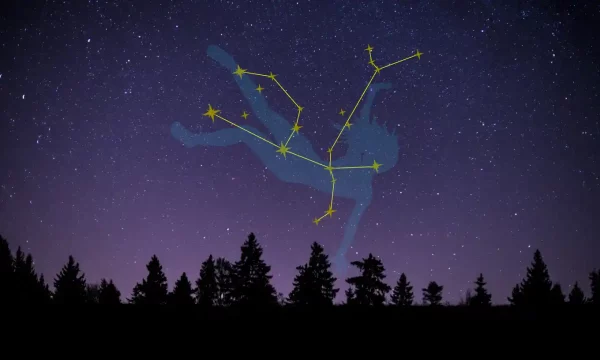
The Andromeda Constellation in The Night Sky
Last Updated: September 12, 2023
Looking up at the night sky in the autumn months, one can’t miss the striking shape of the constellation Andromeda. Named after the mythical Greek princess, Andromeda is one of the most prominent constellations visible in the Northern Hemisphere at this time of year.
Located between Cassiopeia and Pegasus, Andromeda contains several fascinating deep-sky objects, including the Andromeda Galaxy, the closest large spiral galaxy to our own Milky Way.
Introduction
Soaring in the northern celestial sphere is the storied constellation Andromeda, often shortened to And. Deriving its celestial name from ancient Greek mythology, Andromeda translates to “the chained lady,” an allusion to the mythical figure for which it is named.
Tracing a human-like shape in the night sky, Andromeda is one of the most expansive constellations, spanning 722 square degrees. It graces the heavens in the Northern Hemisphere from August through January, visible from latitudes between 90 and -40 degrees. Comprised of a prominent asterism of sixteen bright stars, Andromeda belongs to the Perseus constellation family.
The Andromeda constellation in the Night Sky
With right ascension coordinates at 1 hour and 37 minutes, and a declination of 41 degrees north, Andromeda lies in the northern celestial hemisphere’s NQ1 quadrant.
Visibility
The Andromeda constellation is visible from August through January, but to catch the most brilliant view of the chained maiden, look towards the northern sky during autumn months, especially in November. Andromeda reaches its highest point in the evening at this time of year, allowing stargazers to take in the full majesty of this celestial sight.
The constellation will only be visible to people living between the latitudes of 90 and -40 degrees.
- Northernmost limit: North Pole
- Southernmost limit: North New Zealand, North Argentina
- Never Visible: South New Zealand, South Argentina, French Southern Territories, Falkland Islands [Islas Malvinas], Heard Island and McDonald Islands, Bouvet Island, South Georgia and the South Sandwich Islands, and Antarctica.
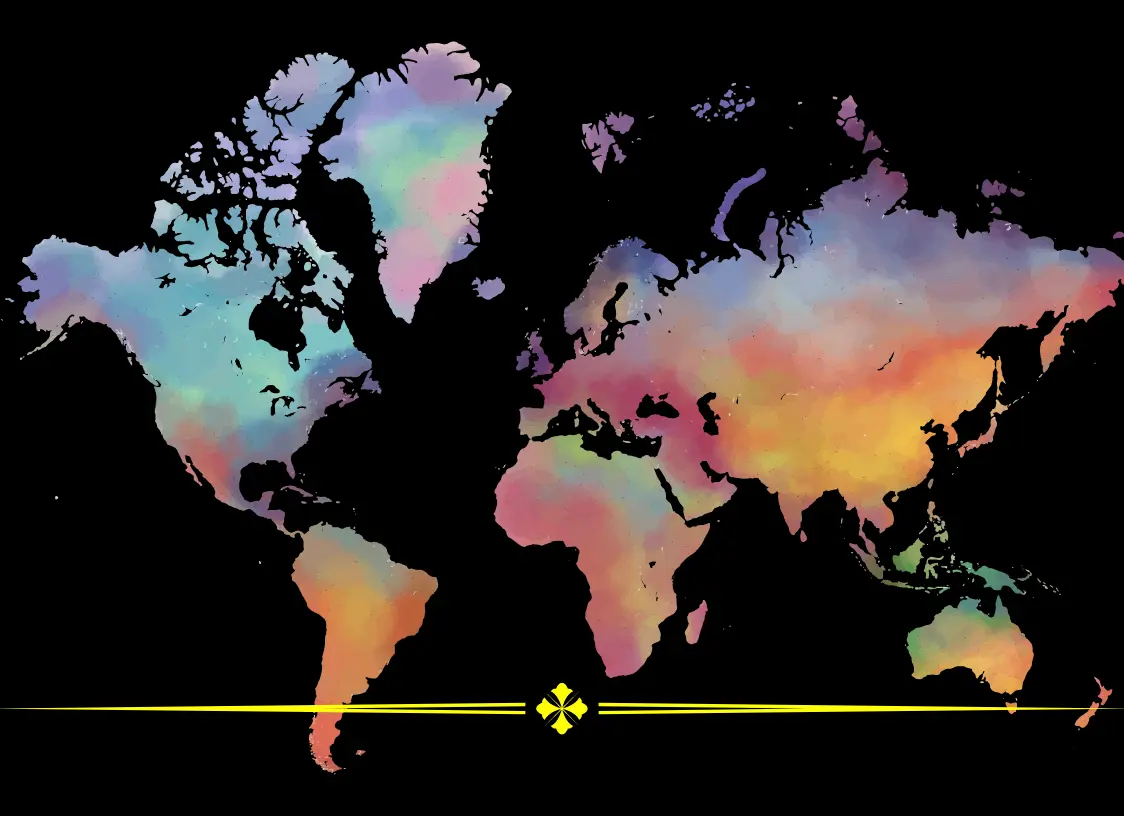
Size
Andromeda is ranked as the 19th largest constellation, and spans an area of approximately 722 square degrees, constituting 1.75% of the celestial sphere. For a comparative scale, this expanse is equivalent to the cumulative area of 3,610 full lunar discs or roughly seven human fists held at arm’s length.
Location in the sky
Right Ascension (RA) and Declination (Dec) are the celestial equivalents of terrestrial latitude and longitude. The Andromeda constellation can be found at the following coordinates: Right ascension between 23h 25m 48s / 02h 39m 32s and declination between 53.18 / 21.67.
Finding the Andromeda Constellation
- Begin by locating the “W” shape of the Cassiopeia constellation.
- From Cassiopeia’s deeper V-shaped side, draw an imaginary line outwards; it will guide you to Andromeda.
- You can also use the Great Square of Pegasus as a reference. One corner of this square, the star Alpheratz, is the brightest star in Andromeda.
- From Alpheratz, trace two lines of stars streaming outwards – you’re now gazing upon the Andromeda constellation!
- Alternatively, if you own a smartphone you could download a stargazing app and use the search function, the real-time planetarium view will point you in the direction of the Andromeda constellation.
Meteor Shower Radiants
Andromeda contains two meteor showers – the Andromedids in November, and the Beta Andromedids in February.
Adjacent asterisms include:
Lacerta, Cassiopeia (her mother), Perseus (her husband), Pegasus, and Triangulum.
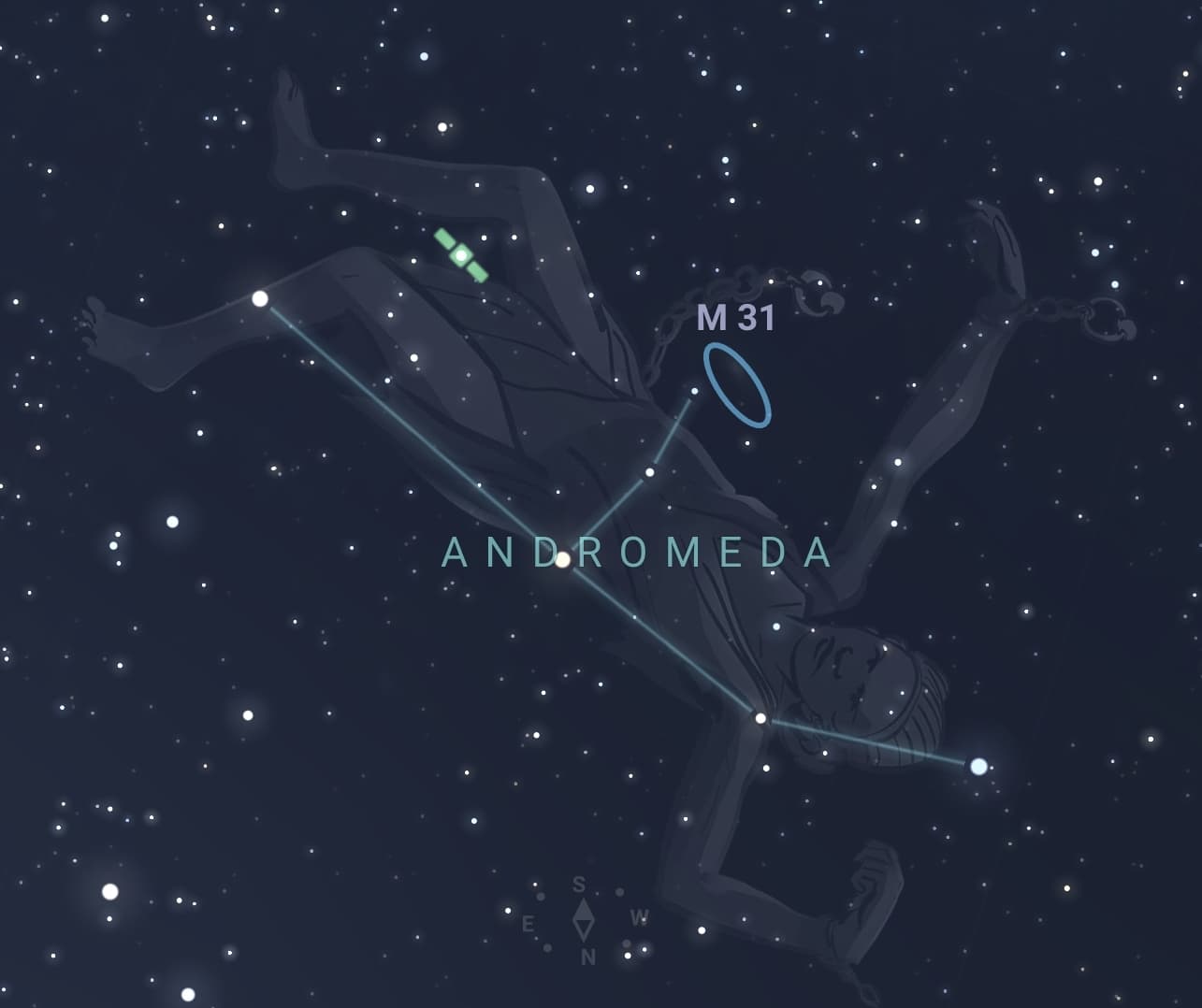
Major Stars in Andromeda
Alpheratz (α Andromedae or Sirrah)
This is the brightest star in the constellation. It’s actually a binary star, with the primary being a hot, blue star. Interestingly, Alpheratz is also considered part of the Pegasus constellation and is one of the stars that make up the Great Square of Pegasus.
- Apparent Magnitude: Approximately 2.1
- Distance: About 97 light-years away from Earth.
- Represent: Andromeda’s head
- Right ascension / Declination: 00h 08m 23.2s / +29° 05′ 25.5
Mirach (β Andromedae)
This is a red giant star and is the second brightest in Andromeda. It’s often used as a jumping-off point for finding the Andromeda Galaxy, as the galaxy is located just above Mirach in the night sky.
- Apparent Magnitude: Approximately 2.1 (very close in brightness to Alpheratz)
- Distance: About 200 light-years away from Earth.
- Represent: Andromeda’s pelvis
- Right ascension / Declination: 01h 09m 43.9s / +35° 37′ 14
Almach (γ Andromedae)
Almach is a beautiful multiple star system. The primary star is a bright golden-yellow giant, while its main companion is a blue-green star. When viewed through a telescope, the color contrast between these stars is striking.
- Apparent Magnitude: Approximately 2.3 for the combined light of the system. However, it’s worth noting that Almach is a multiple-star system, and the individual components have different magnitudes.
- Distance: About 350 light-years away from Earth.
- Represent: Andromeda’s left foot
- Right ascension / Declination: 02h 03m 53.9s / +42° 19′ 47
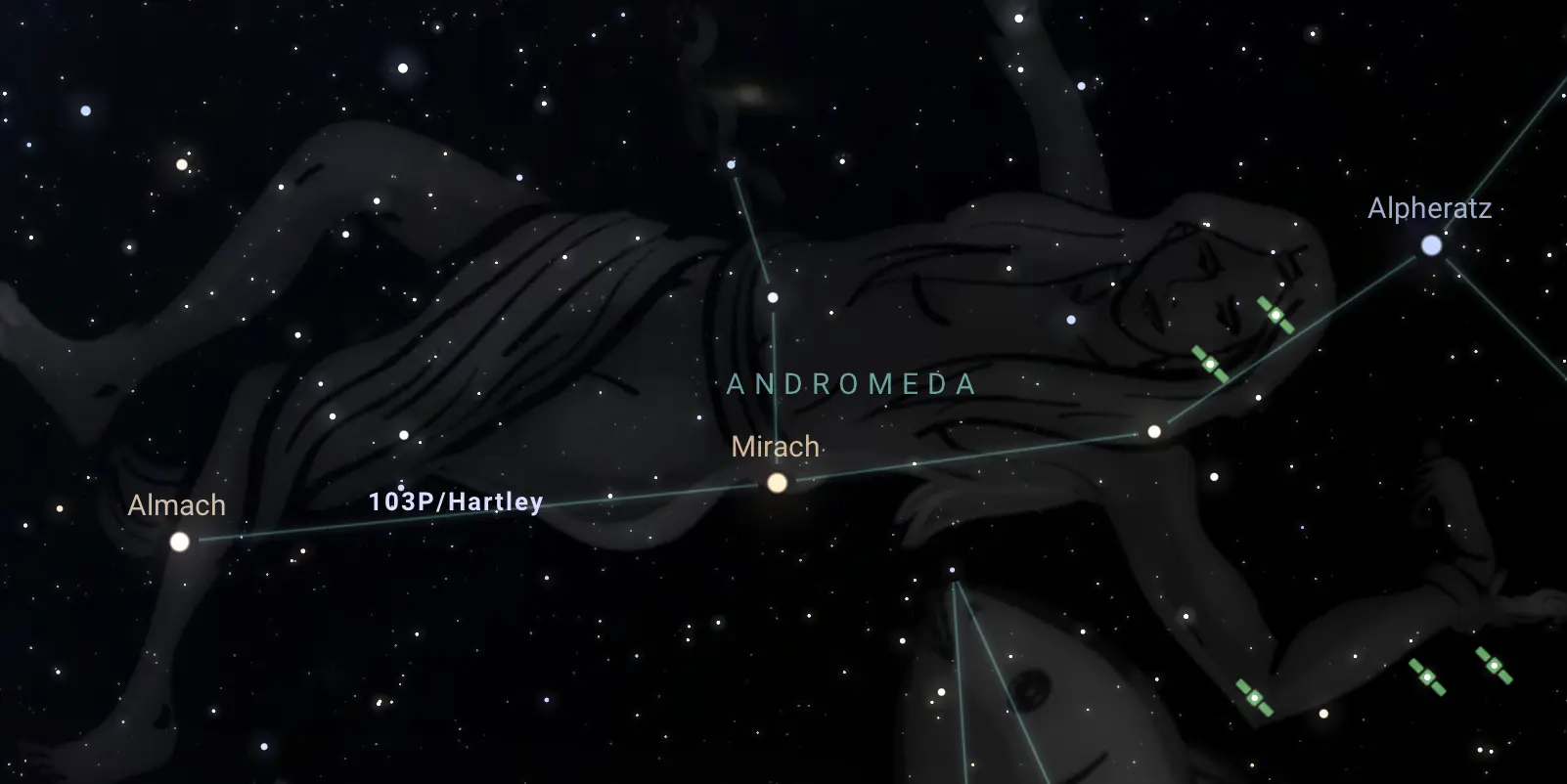
Noteworthy Deep Sky Objects within Andromeda
M31 – The Andromeda Galaxy
- Type: Spiral galaxy.
- Distance: Approximately 2.537 million light-years from Earth.
- Significance: It’s the nearest spiral galaxy to the Milky Way and is on a collision course with our galaxy. However, this collision is not expected to occur for another 4 billion years. When viewed from a dark location, the Andromeda Galaxy can be seen with the naked eye, making it one of the most distant objects visible without optical aid.
M32 and M110
- These are satellite galaxies of the Andromeda Galaxy.
- M32 (NGC 221):
- Type: Compact elliptical galaxy.
- Distance: Roughly the same as M31 since it’s a satellite.
- M110 (NGC 205):
- Type: Dwarf elliptical galaxy.
- Distance: Again, roughly the same as M31.
NGC 7662 – The Blue Snowball Nebula
- Type: Planetary nebula.
- Distance: Approximately 5,600 light-years from Earth.
- Significance: It’s called the “Blue Snowball” because of its blue color and round appearance when viewed through a telescope. The blue color is due to the emission of doubly ionized oxygen.
NGC 752
- Type: Open star cluster.
- Distance: Approximately 1,300 light-years from Earth.
- Significance: It’s one of the older known open clusters, with an age estimated at around 1.9 billion years. It contains over 70 stars brighter than the 13th magnitude, and many of them are visible in binoculars or small telescopes.
Andromeda in Greek Mythology
In Greek mythology, Andromeda was the daughter of King Cepheus and Queen Cassiopeia, the Ethiopian king and queen. She was incredibly beautiful and boasted that her beauty exceeded that of the Nereids, the nymph-daughters of the sea god Nereus. This angered the Nereids and in turn Poseidon, god of the sea, who sent a sea monster (depicted as Cetus the whale in the sky) to ravage Cepheus’ kingdom.
To appease the angry gods, Cepheus and Cassiopeia chained Andromeda to a rock on the shore as a sacrifice to the monster. But the hero Perseus arrived in time, slew the sea monster, and saved Andromeda. He then married her.
The myth provided inspiration for the constellation Andromeda, which depicts the chained woman. She is often depicted in star atlases holding the chains that bound her to the rocks. Andromeda’s mother Cassiopeia and the sea monster Cetus are also nearby constellations along with Perseus and Pegasus.
The story of Andromeda has been a popular subject in art, with many paintings and sculptures portraying her plight and rescue. Key elements of the myth including her beauty, sacrifice, and salvation have imbued the constellation with symbolic meaning over the centuries.
Additional Facts
- It is one of the 17 human-shaped constellations.
- It is one of the 48 constellations listed by Ptolemy.
- It does not have any stars with an apparent magnitude brighter than 2.
- Its main three stars form an uneven line, from the Princess’ head to toes.

Explore more constellation stories 🌌
This page is part of our collection of constellation-related articles. If you enjoyed the read, then you’ll love the following articles.

